Daily Do Now slides
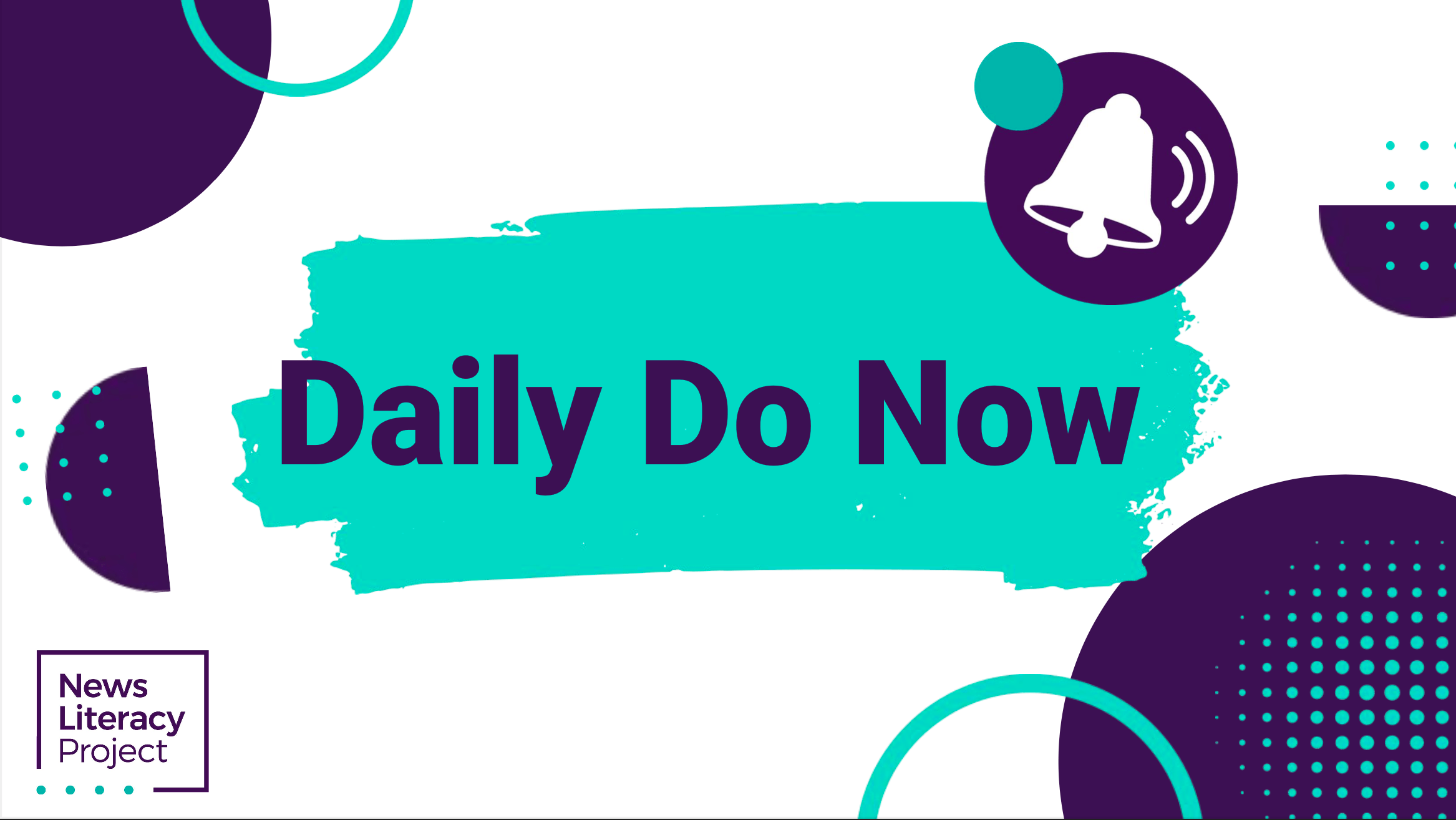
This collection of “do now” resources is an ideal way to maximize news literacy learning in the opening minutes of class. These slides are designed to tap into research-based strategies to assist in effective classroom management, boost student engagement and improve retention. They can be used as formative assessment tools across subjects and grade levels.
How to use this collection:
- Bookmark this Google slides link, which will be updated every Friday at 5 p.m. ET with a new slide sequence for the coming week.
- Use these 5- to 10-minute bell ringer activities to reinforce news literacy concepts and spark discussion at the beginning of class.
- Refer to the “speaker notes” section at the bottom of the slides for educator links, instructions and details on standards alignment.
Each slide aligns with one of five primary standards from our Framework for Teaching News Literacy.
These standards invoke a combination of knowledge, skills and mindsets that are required to recognize credible information, avoid being exploited by misinformation and make informed, empowered choices.
-
Standard 1:
Students distinguish news from other types of information and can recognize both traditional and nontraditional advertisements.
-
Standard 2:
Students acknowledge the importance of the First Amendment in American democracy and a free press to an informed public.
-
Standard 3:
Students understand why professional and ethical standards are necessary to produce quality journalism, and they can apply understanding of those standards to discern credible information and sources for themselves.
-
Standard 4:
Students demonstrate increased critical habits of mind, including effective verification skills and the ability to detect misinformation and faulty evidence.
-
Standard 5:
Students express and exercise civic responsibility by seeking, sharing and producing credible information as effective participants in a democracy.
Note: You can also find this collection featured in The Sift, our weekly newsletter for educators. Some bell ringer slides spotlight topics included in that week’s newsletter.
We’d love your feedback! Please share your thoughts on these resources using this short form.
How to teach news literacy in polarizing times
The historic upheaval that dominated previous headlines — including a global pandemic, a national reckoning over racial injustice, a contentious presidential election and the insurrection at the U.S. Capitol — underscored the deep divides separating much of the country and the world. In such a polarized era, partisanship and vitriol can easily seep into the classroom when current events come up.
But the challenges of teaching news literacy in today’s polarized climate — including charged reactions from students and parents over controversial news events — also present opportunities for learning and growth.
These eight strategies can help you teach the most important stories and issues of the day while navigating social and political differences to make classroom conversations worthwhile:
- Challenge students to reflect on personal biases and consider how these biases impact how they see the world, and how they perceive news.
- Establish ground rules for discussion to keep the conversation respectful.
- Approach news reports as texts and encourage students to read closely and critically.
- Focus on journalism standards to help build common ground.
- Emphasize facts and make sure students understand the difference between matters of fact and matters of opinion.
- Encourage students to consult diverse news sources to avoid falling into partisan news bubbles.
- Embrace ambiguity to make room for tough questions and meaningful discussions without the need for definitive answers.
- Focus on specifics and particular parts of news coverage to avoid fights over the news organization or topic itself.
In addition to these eight tips, this infographic includes classroom ideas and hyperlinked resources to help put these strategies into action.
Teaching news literacy amid so many controversial news events and political polarization can feel overwhelming, but approaching classroom discussions with these strategies in mind can help defuse partisanship while empowering students to identify credible news and information.
Critical observation challenge: Was Elsa really arrested?
This upper elementary slideshow activity introduces students to critical observation skills, or the ability to identify key elements in a piece of visual information text. By closely examining an actual social media post by a police department in Illinois about the “arrest” of Elsa from Disney’s Frozen, students identify evidence indicating that the photos and claims in the post are misleading. Students also consider and discuss the primary purpose of the post and what led to people’s confusion.
Essential questions
- How can social media posts be misunderstood?
- Why are critical observation skills important when using social media?
- What problems can arise when people take a joke on social media seriously?
- How can a joke fail on social media?
This news literacy classroom activity is suggested for grades 4-6.
Key terms
- Critical observation
- Evidence
- Purpose
Democracy’s Watchdog
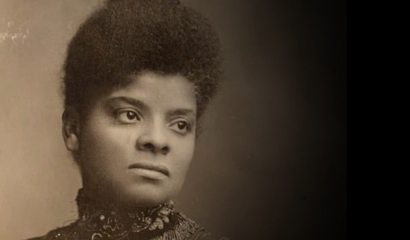 In this lesson, students learn about the vital role the First Amendment protections of free speech and a free press play in American democracy using four case studies of notable investigative (or “watchdog”) reporting. This jigsaw-style lesson has students join an “expert” group to focus on one specific case study, then join their “jigsaw” group to share what they learned with their classmates. Jigsaw group members then document the details of each report and reflect on the role the First Amendment played in each of these historic pieces of journalism.
In this lesson, students learn about the vital role the First Amendment protections of free speech and a free press play in American democracy using four case studies of notable investigative (or “watchdog”) reporting. This jigsaw-style lesson has students join an “expert” group to focus on one specific case study, then join their “jigsaw” group to share what they learned with their classmates. Jigsaw group members then document the details of each report and reflect on the role the First Amendment played in each of these historic pieces of journalism.
This lesson makes the following essential questions available:
- What five freedoms are protected by the First Amendment?
- How do the five freedoms work together to strengthen American democracy? For example, how do the freedoms of speech and assembly work together?
- In what ways can a free press act like a watchdog on behalf of the public?
- If the press sometimes acts like a watchdog, what is it protecting?
- Who watches the watchdogs?
- In what ways can investigative journalism bring about social or political change?
This news literacy classroom activity is suggested for grades 7-9 and 10-12+.
Key terms:
- First Amendment
- Watchdog role
- Multiple sources
- Eyewitness source
- On-the-record source
- Anonymous source
- Context
- Fairness
- Free speech
Connections with other NLP resources:
- “Democracy’s Watchdog” lesson on NLP’s Checkology® virtual classroom
About classroom lessons:
NLP’s lesson plans cover core news literacy subjects that help provide educators with the resources to design their own units. Many of these lessons have a corresponding version on NLP’s e-learning platform, Checkology. You can find activities, quizzes, infographics and posters that complement many lessons in NLP’s resource library.
“TRUST ME” discussion guide on manipulation and misinformation (collegiate guide)
 About the film
About the film
Misinformation is all around us, and it has real-world consequences. In today’s information landscape where anyone can publish almost anything, who — and what — can you trust?
“TRUST ME” is a feature-length documentary directed by Oscar-nominated Roko Belic that delves into the topics of manipulation and misinformation by exploring human nature, information technology, and the need for news and media literacy to help people trust one another. The film was produced by the Getting Better Foundation, whose mission is to build trust using the truth. For additional information about the film or its producers, or to get involved, go to the film’s website.
The film is available for purchase from New Day Films: “TRUST ME“.
About this guide
This guide was produced by the News Literacy Project (NLP) and Pamela Brunskill with support from the John S. and James L. Knight Foundation.
The guide is intended for adult learners in all settings, such as colleges, correctional facilities and community forums. Leaders should adapt, adopt and adjust these recommendations and ideas as they see fit.
The discussions we recommend are broken up into three sections: before viewing, during viewing and after viewing to help you establish, and build on, the core concepts in the film and reflect on the questions that result. Extension and further reading opportunities are listed at the end of the guide.
“TRUST ME” classroom guide: A unit on manipulation and misinformation
 About the film
About the film
Misinformation and disinformation are all around us, and have real-world consequences. In today’s information landscape where anyone can publish almost anything, who — and what — can you trust?
“TRUST ME” is a feature-length documentary that delves into the topics of manipulation and misinformation by exploring human nature, information technology, and the need for news and media literacy to help people trust one another. The film was produced by the Getting Better Foundation, whose mission is to build trust using the truth. For additional information about the film or its producers, or to get involved, visit TRUSTMEdocumentary.com and GettingBetterFoundation.org. The film is available for purchase from New Day Films.
The education cut of the film that accompanies this guide includes 15 segments. Depending on your schedule and objectives, you can show the full documentary or share it in segments.
About this guide
This guide was produced by the News Literacy Project (NLP) and Pamela Brunskill with support from the John S. and James L. Knight Foundation, which also funded the distribution of the education cut of the film.
The guide is intended for students in grades 4-6, 7-9, and 10-12+. The lessons are delineated for a particular grade band when appropriate and are designed for teachers to adapt, adopt, and adjust as they see fit.
The lessons are broken up into three sections: before viewing, during viewing and after viewing to allow for scaffolded development of concepts and understanding. Extension and further reading opportunities are listed throughout each of these sections.
“TRUST ME” discussion guide on manipulation and misinformation (for parents and caregivers)
 About the film
About the film
Misinformation is all around us, and it has real-world consequences. In today’s information landscape where anyone can publish almost anything, who — and what — can you trust?
“TRUST ME” is a feature-length documentary directed by Oscar-nominated Roko Belic that delves into the topics of manipulation and misinformation by exploring human nature, information technology, and the need for news and media literacy to help people trust one another. The film was produced by the Getting Better Foundation, whose mission is to build trust using the truth. For additional information about the film or its producers, or to get involved, go to the film’s website.
The film is available for purchase from New Day Films: “TRUST ME“.
About this guide
This guide was produced by the News Literacy Project (NLP) and Pamela Brunskill with support from the John S. and James L. Knight Foundation.
The guide is intended for parents and caregivers to aid in discussing the film with their families or other caregivers. They should adapt, adopt, and adjust these recommendations and ideas as they see fit.
The discussions we recommend are broken up into three sections: before viewing, during viewing and after viewing to help you establish, and build on, the core concepts in the film and reflect on the questions that result. Extension and further reading opportunities are listed at the end of the guide.
InfoZones
 As the amount of information at our fingertips grows at an unprecedented rate, filtering information is an increasingly essential news literacy skill. The foundational concepts of “InfoZones” help guide students to the vital realization that not all information is created equal and that the credibility of different types of information is often correlated with their purpose.
As the amount of information at our fingertips grows at an unprecedented rate, filtering information is an increasingly essential news literacy skill. The foundational concepts of “InfoZones” help guide students to the vital realization that not all information is created equal and that the credibility of different types of information is often correlated with their purpose.
By helping students discover six primary purposes of information, you can help them develop the habit of questioning the purpose of all the information they encounter.
Of course, most pieces of information have more than one purpose — a television show that is produced to be entertaining can also be informative, for example, or an advertisement produced to sell a product or service can also entertain — but this lesson helps students understand that almost all the information they encounter has one primary purpose that has a significant effect on its credibility.
In this lesson, students learn how to categorize information by determining its primary purpose and then align these purposes with six InfoZones to help them analyze the credibility of actual examples of information.
This lesson makes the following essential questions available:
- Why is it important to know the primary purpose of the information we encounter?
- Does the purpose of information affect its credibility?
- Do some pieces of information have more than one purpose?
- Is it still possible to identify a primary, or main, purpose for such examples?
This news literacy classroom activity is suggested for grades 4-6, 7-9 and 10-12+.
Key terms:
- News
- Opinion
- Advertising
- Entertainment
- Propaganda
- Raw information
- Documentation
Connections with other NLP resources:
- “InfoZones” lesson on NLP’s Checkology® virtual classroom
About classroom lessons:
NLP’s lesson plans cover core news literacy subjects that help provide educators with the resources to design their own units. Many of these lessons have a corresponding version on NLP’s e-learning platform, Checkology. You can find activities, quizzes, infographics and posters that complement many lessons in NLP’s resource library.
News judges
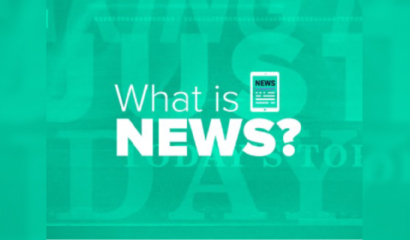 Newsworthiness is a key news literacy concept. It helps students understand that what appears as “the news” on any given day is the result of a series of judgments and conversations in newsrooms across the country and around the world. Helping students understand the major factors that drive news judgment — how important, interesting, unique and timely an event or issue is — is vital to helping them understand and think critically about the news they encounter in their daily lives. Requiring them to make news judgments of their own can help them appreciate how difficult such decisions can be and learn how to evaluate and respond to the judgment of professional journalists.
Newsworthiness is a key news literacy concept. It helps students understand that what appears as “the news” on any given day is the result of a series of judgments and conversations in newsrooms across the country and around the world. Helping students understand the major factors that drive news judgment — how important, interesting, unique and timely an event or issue is — is vital to helping them understand and think critically about the news they encounter in their daily lives. Requiring them to make news judgments of their own can help them appreciate how difficult such decisions can be and learn how to evaluate and respond to the judgment of professional journalists.
News judgment frequently plays a role in criticism of news media. Politicians, activists and the public often complain about how much — or how little — news coverage is given to a particular issue or event. But sometimes these complaints do not accurately reflect actual reporting. (You should make a point of noting to students that while many people make assertions about what news media do or do not cover, it’s always important to verify whether those assertions are true by surveying and reviewing actual coverage.)
Giving students an understanding of newsworthiness as a concept, and helping them develop the skill of news judgment, allows students to do more than just criticize; it enables them to enter the conversation about so-called agenda-setting and to engage with such criticisms when and where they encounter them.
In this lesson, students use four key criteria to explore how journalists determine which events to cover, and feature as top stories, in a news cycle. Then they apply these criteria to both hypothetical and actual news events to make their own news judgments.
This lesson makes the following essential questions available:
- What makes an issue or event “news,” and who decides?
- What factors should be used to determine which issues and events are newsworthy, and who decides?
- How should news outlets decide which stories to feature? In other words, which stories should lead a television newscast, or be placed on the front page of a newspaper?
- How might the level of diversity in a newsroom influence news judgments?
This news literacy classroom activity is suggested for grades 7-9 and 10-12+.
Key terms:
- News judgment
- Newsworthiness
- News value
- Lead story
Connections with other NLP resources:
- “What Is News?” lesson on NLP’s Checkology® virtual classroom
About classroom lessons:
- NLP’s lesson plans cover core news literacy subjects that help provide educators with the resources to design their own units. Many of these lessons have a corresponding version on NLP’s e-learning platform, Checkology. You can find activities, quizzes, infographics and posters that complement many lessons in NLP’s resource library.
Story explorers: Evaluate news coverage
 In this classroom activity, students select an event or issue in the news that interests them, then split into research teams to collect and evaluate coverage of the subject from different news organizations.
In this classroom activity, students select an event or issue in the news that interests them, then split into research teams to collect and evaluate coverage of the subject from different news organizations.
Each group is responsible for gathering and analyzing the quality of the reporting from their assigned media outlet(s). They use a K-H-W-L chart that reflects what they know, what they’ve heard, what they want to know and what they learned in the course of their inquiry, research and reflection.
This activity is designed to help students better understand newsworthiness (what makes an issue or event worthy of news coverage) and learn how to analyze coverage by collecting and evaluating news reports.
It also makes the following essential questions available:
- Do news media sometimes cover a subject too much? Do they sometimes cover other subjects too little?
- What steps do credible news organizations take to try to ensure accuracy?
- Are some sources of information more credible than others? Why or why not?
- Whose interests should journalists represent? What is the best way for them to do this?
This news literacy classroom activity is suggested for grades 7-9 and 10-12+.
Key terms:
- Newsworthiness
- News judgment
- News value
- Verification
Connections with other NLP resources:
- “News Judges” lesson plan in NLP’s Resource Library
- “What Is News?” lesson on NLP’s Checkology® virtual classroom
- “Understanding Bias” lesson on NLP’s Checkology virtual classroom
About classroom activities:
NLP’s activity plans are designed to be “evergreen” news literacy resources that help educators introduce and reinforce specific news literacy skills and concepts. They are often best used as follow-up and extension activities from specific NLP lessons, either in the resource library or on Checkology.
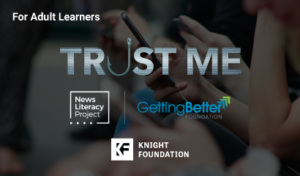 About the film
About the film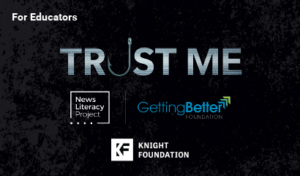 About the film
About the film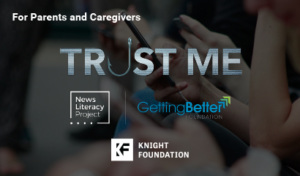 About the film
About the film